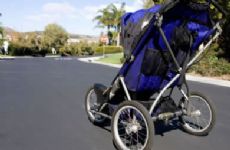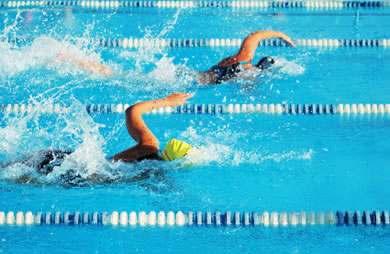|
School's out, and that means more time for playing, swimming, biking, exploring and other outdoor fun. Not to be a Debbie Downer, but along with all of that extra activity comes a heightened risk of accidents and injury. Short of keeping your kids in a bubble—or cloning yourself so you can be everywhere at all times—there are some smart precautions you can take to keep your little sun warriors safe. We talked with Dr. Greg Kottyan from Mid-City Pediatrics about the types of injuries his practice sees during summer months. Peace of Mind in the Pool Summer and swimming go hand-in-hand—but swimming and safety aren't always such natural companions. Drowning is the fifth leading cause of unintentional death in the United States, and one in five victims are children 14 and younger, according to the CDC. "Pools are definitely the number-one risk of summer injuries," says Dr. Kottyan. In addition to those who have experienced near-drowning incidents, his practice also sees kids who have been injured from running and falling on a pool deck, hitting their heads on diving boards and getting hurt during water play. Pool injuries and deaths aren't always predictable, but they are preventable. Below are some of Dr. Kottyan's main pool safety tips:
Kids have a natural urge to jump, which has resulted in skyrocketing sales for backyard trampolines. While trampolining is a great way to stay active and burn calories, it's not an exercise in safety. Between 2002 and 2011, more than one million people were treated for broken bones or other injuries sustained on trampolines, according to one study. "Many parents are under the misconception that having a net around the trampoline prevents injuries, but it actually doesn't," Dr. Kottyan says. "A lot of the injuries are caused by kids landing on their head and neck, things that a net wouldn't prevent." To increase your kids' safety by leaps and bounds, Kottyan suggests exercising caution during jumping sessions, always having an adult present and following the one-at-a-time rule to prevent collisions. Hitting the Open Road A kid, a bike and the open road is a recipe for summer fun and freedom—but can also result in painful or even tragic consequences without the right precautions. Per the CDC, children between the ages of 5 and 14 have the highest rate of bicycle injuries. And when you add scooters, rollerblades, hoverboards and other modes of sidewalk transportation to the mix, the chances of accidents grows exponentially. According to Dr. Kottyan, the single most important precaution when biking or riding is to wear a helmet. He also suggests strapping on knee and elbow pads to prevent painful scrapes in the event of a tumble. Make sure the bicycle is properly maintained, the tires are inflated to the right pressure and reflectors and mirrors are in place for maximum visibility. Check out our other bicycle safety tips, including how to choose a properly fitting helmet. As a general rule, walkers and rollerbladers should stick to the sidewalks. According to the National Bicycle Safety Education Curriculum, bicycles should also stay on the sidewalk for kids ages 5 to 8 who are still learning, and kids 9 and over can transition onto the road (while following the traffic rules). Feeling the Burn We all love the sun-kissed look that comes with soaking up some natural vitamin D, but sunburn is a different story. That red, painful or even blistering condition is the result of the skin's injury from exposure to UV radiation. Dr. Kottyan maintains that even one burn is too many. "Sunburn isn't harmless," he says. "It can have a cumulative effect, increasing the risk of skin cancer over the child's lifetime." He recommends applying a waterproof sunscreen every time kids go out in the sun, 15 minutes before swimming and reapplying every two to three hours thereafter. (Forgot the sunscreen? Check out these natural remedies for alleviating painful sunburn.) Heat exhaustion and heatstroke are also common summertime diagnoses at Dr. Kottyan's office. If a child is playing outside in very hot weather without continuous hydration, the body won't be able to sweat enough to cool properly, causing its temperature to soar dangerously high. Symptoms of heat exhaustion include nausea, fatigue, headache, muscle cramps and, as it progresses to heatstroke, mental disorientation or even unconsciousness. To prevent heat-related illness, Dr. Kottyan recommends taking periodic breaks from the heat, coming inside to cool off as necessary and drinking plenty of water. When the Competition Heats Up Summer camps have been shown to boost kids' confidence, fitness, friendships and resilience—but the high level of physical activity can sometimes result in injury. With the rising popularity of baseball, football, soccer, tennis and other sports-themed camps, there's a greater need for safety precautions to keep little athletes safe. During the summer months, Dr. Kottyan's practice notices an uptick in concussions among patients. "Concussions happen in every sport, especially football and girls' soccer," he says. "Parents and coaches at summer sports camps should be trained in recognizing the signs of concussion, so they can pull the child out of the activity and seek medical treatment." Check out our additional ideas for having fun and staying safe over summer vacation. What other summer dangers and safety tips would you add to this list? |
Related Entries
More From SparkPeople
|





.png)













.jpg)



